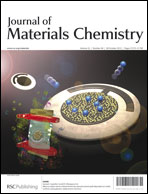This paper reports a simple one-step growth of hierarchically micro/nanostructured porous metallic copper microspheres with high yield at room temperature. The key growth strategy is to use phenol and ascorbic acid as porogen and reducing agents, respectively, to induce the growth of the porous hierarchical micro/nanostructure. The samples are characterized by X-ray diffraction, scanning electron microscopy, transmission electron microscopy, and nitrogen adsorption. It is found that the morphology and structure of the porous Cu microspheres are highly dependent on the phenol added. Compared to the commercial Cu powders and Cu sheets with dense internal structure, hierarchically micro/nanostructured porous metallic copper microspheres show excellent superhydrophilic surface property and much higher catalytic activity for the reduction of 4-nitrophenol, demonstrating the significance of the pore structure of the copper materials. Their potential applications in catalysis for oxygen reduction reaction of fuel cells are also explored. All these features make the as-prepared porous copper microspheres a highly attractive candidate for multi-functional materials.

You have access to this article
 Please wait while we load your content...
Something went wrong. Try again?
Please wait while we load your content...
Something went wrong. Try again?


 Please wait while we load your content...
Please wait while we load your content...